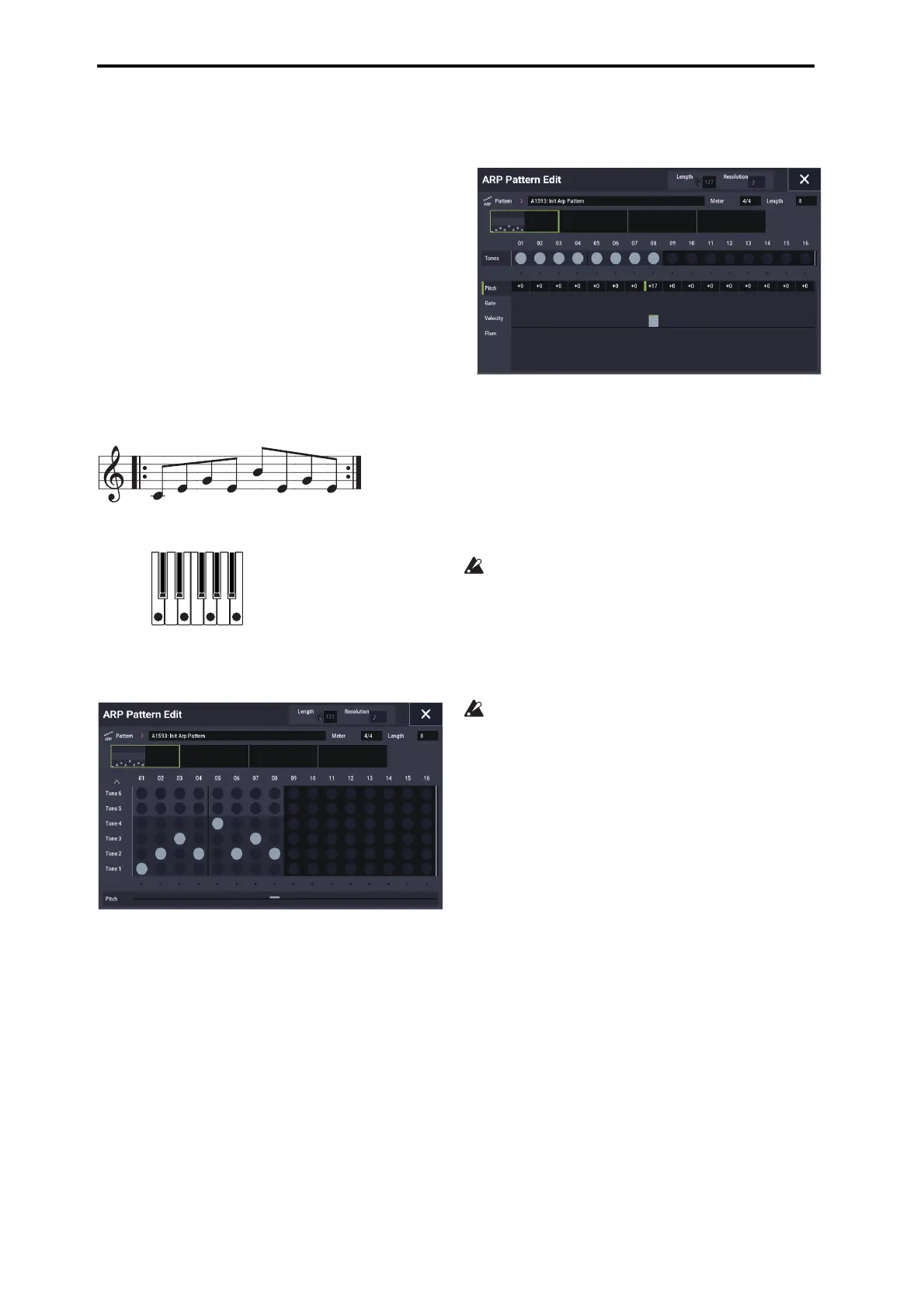Global Settings, Wave Seq., Drum Kits
198
A pattern consists of Steps and Tones.
•
Step:
Each user arpeggio pattern has up to 64 steps.
Starting with the first step, the arpeggiator will play
notes at intervals of the note value specified by
Resolution
. The vertical lines of the grid indicate the
steps.
Use
Step
to select the step; then specify
Pitch
,
Gate
,
Velocity
and
Flam
for each step.
You can also select the step by pressing the Step line in
the parameter view at the bottom. You can also edit by
dragging in the parameter view.
•
Tone :
Each step can sound a chord of up to 12 tones
(
Tone No.
1-12). By touching and dragging the overview
on the upper part of the screen, select the location for
entering tones in the zoom view below. Press the touch
grid to enter tones.
Creating an example pattern
1. Press the EDIT button.
2. Enter tones in the touch grid as shown in the
illustration below.
3. When you play the keyboard as shown in the
illustration, the arpeggiator will begin playing.
Tone 1 corresponds to the pitch of the lowest key of chord
you play on the keyboard. (If the “Sort” checkbox in the
Scene Setup dialog box on the ARP DRUM page in
PROGRAM mode is not selected, it will correspond to
the pitch of the first note you play.)
4. Touch “Pitch” to display the Parameter View. For
steps 01–08, make settings for “Pitch,” “Gate,”
“Velocity,” and “Flam.”
Pitch:
This offsets the pitch of the arpeggio note in
semitones up or down. You can input the same tone for
each step, and change the
Pitch
value for each to create a
melody using a single tone. (See “Melody pattern”)
Gate:
Specifies the length of the arpeggio note for each
step.
Velocity
: This specifies the strength of the note. With a
setting of Key, the note will sound at the strength of how
it was actually played.
The
Gate
and
Velo c ity
settings you select here will be
valid if the
Gate
and
Velo c ity
parameters (Scene Setup
dialog in PROGRAM mode) are set to Step. If these
parameters have a setting other than Step, the
Gate
and
Velocity
that were specified for each individual step will
be ignored, and all notes of the arpeggio will sound
according to the settings in Scene Setup dialog. Be sure to
verify the settings of the program.
When editing
Gate
,
Velo c ity
, and
Swing
, use the
SELECT button to select ARP/DRUM, and set knob 1
(GATE), knob 2 (VELOCITY) and knob 4 (SWING) to
the center position (12 o’clock).
5. To change the user arpeggio pattern name, use the
“Rename Arpeggio Pattern” menu command. (See
page 695 of the PG)
6. If you wish to save the edited user arpeggio pattern to
internal memory, be sure to Write the user arpeggio
pattern. (See page 201)
If you turn off the power without writing, the edited
contents will be lost.
7. If you wish to save the state of the program at the
same time, return to PROGRAM mode and write the
program. (See page 34)

